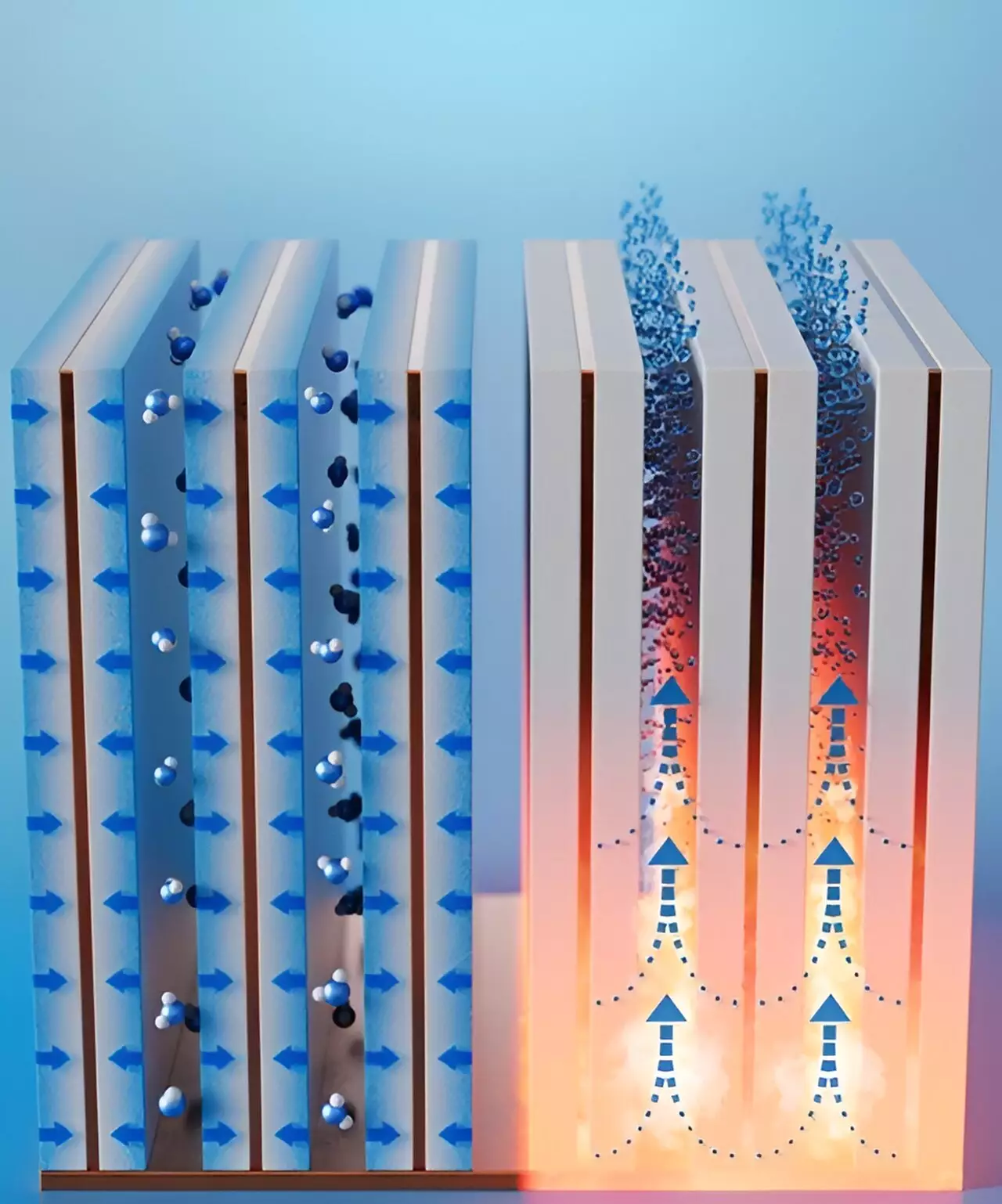Clean, safe water is an invaluable resource, especially in arid regions where water scarcity is a pressing issue. Researchers have recently made strides in developing a compact and efficient device that can harvest water from the air, providing a potential solution to meet the growing demands for water. This innovative system has the potential to revolutionize water harvesting in areas with limited access to freshwater sources.
Water vapor in the Earth’s atmosphere offers a vast reservoir of fresh water, but collecting this vapor presents numerous challenges. Traditional methods of collecting dew or fog are not practical in dry regions that lack substantial levels of moisture. However, advanced materials such as temperature-responsive hydrogels, metal-organic frameworks, and zeolites have shown promise in extracting water from the air. To be effective, these absorbent materials must be integrated into portable devices with a waste heat source, making them suitable for real-world applications.
Researchers Xiangyu Li, Bachir El Fil, and their team have developed a cutting-edge humidity harvester that addresses the limitations of previous water harvesting systems. The device features water-adsorbent “fins” made of copper foams coated in a zeolite material, optimized to efficiently trap and release moisture from the air. Unlike conventional approaches that focus solely on material development, the researchers prioritized the co-design of the adsorption bed and material properties, leading to the creation of thin, compact adsorbent fins that enhance water harvesting capabilities.
In their experiments, the researchers constructed a device with 10 small adsorbent fins arranged on a copper base plate, strategically spaced to maximize moisture capture from low-humidity air. After an hour of operation, the fins became saturated with moisture, releasing the trapped water when the base plate reached a temperature of 363 degrees Fahrenheit. Through repeated cycles of collection and release, the device was able to generate up to 1.3 liters of potable water per day from air with 30% relative humidity. This output surpasses the performance of previous water harvesting devices by a significant margin.
The successful development of this humidity harvester opens up new possibilities for rapid and efficient water harvesting from dry air, presenting a viable solution for water-stressed regions. With further advancements and integration into existing infrastructures that produce waste heat, such as buildings or vehicles, this technology could offer a cost-effective means of generating clean water in arid environments. The researchers are optimistic about the potential impact of their innovation on improving water accessibility and sustainability worldwide.
The emergence of this groundbreaking water harvesting device signifies a significant step towards addressing the global water crisis. By leveraging innovative materials and design principles, researchers have unlocked a new avenue for generating clean water from the atmosphere, offering hope for a more water-secure future.


Leave a Reply